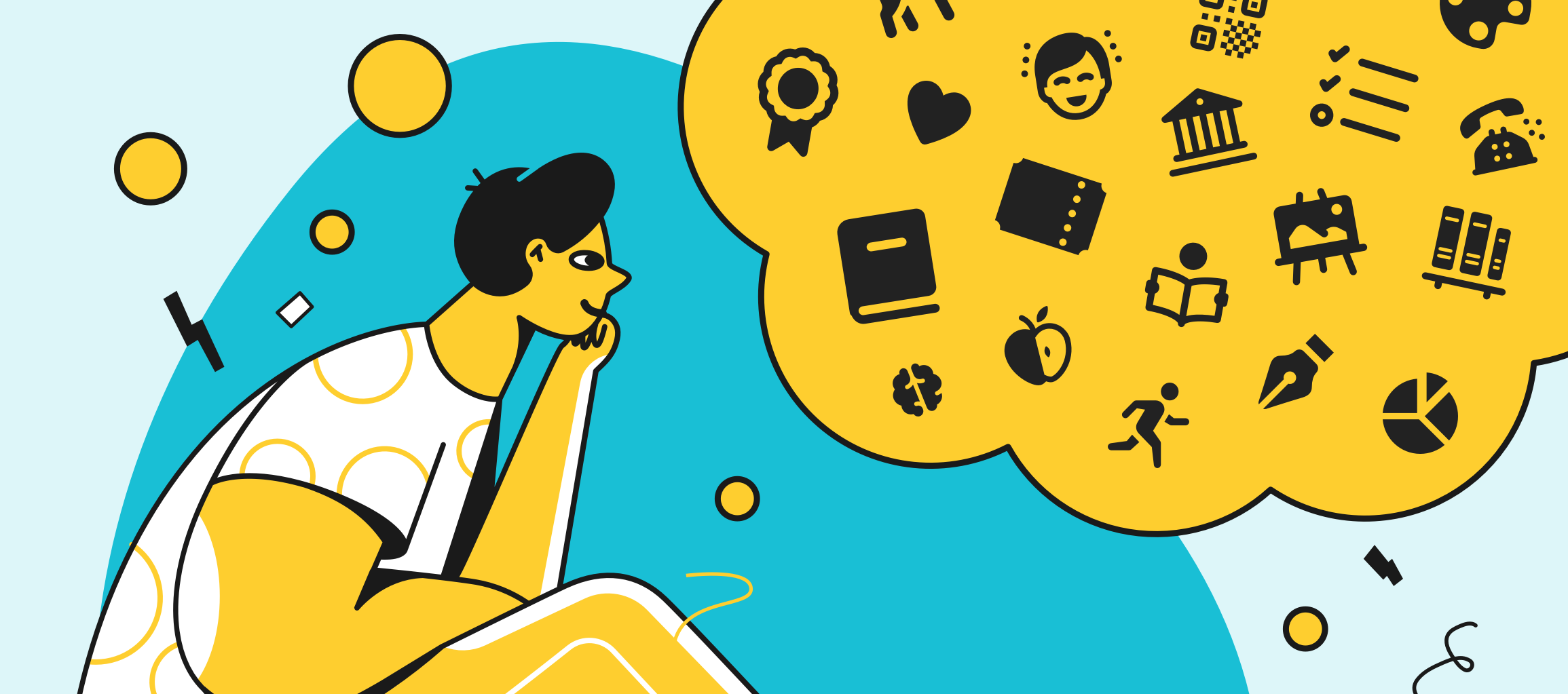Today we’re excited to feature the work of a friend of the Beanstack family, Mrs. Natalie Rose. Natalie is a Humanities teacher in the Clark County School District (NV). She received her teaching degree at UNLV and also holds a master's degree in curriculum and instruction. She formerly taught first, fourth grade, and preschool.
Natalie is currently in the process of earning her librarian certification and is researching reading incentive programs as a part of her coursework. For one of her recent research papers, she designed her “dream reading incentive program,” which included Beanstack reading challenges (we’re blushing!).
We love Natalie’s approach to motivation and her incentive recommendations. Keep reading for excerpts from her paper!*

Reading Incentive Programs Past and Present
The paper shares a personal anecdote that paints a vivid picture of how reading programs were when Natalie was in elementary school.
The year is 1988 and I am in the third grade. I have just completed an Accelerated Reader test on the book Ramona Quimby. I gaze up at the chalkboard and see my name at the top of the AR Leaderboard. I smile - not because I am in first place, but because now I have been given the green light to read Beezus and Ramona. I can’t recall what prizes I earned for meeting my AR goals or for sitting in first place on the top of that leaderboard. My guess is I earned a plethora of colorful plastic trinkets that now sit in the middle of a landfill, waiting to decompose. I remember feverishly reading anything and everything by Beverly Cleary that year. Not because I wanted to remain in first place, or earn more prizes, but because I loved [the characters] Ramona, Beezus, Henry, and Ribsy. I wanted to be friends with these kids and hang out with them on Klickitat Street. As I progressed through the rest of my years in elementary school, the AR program dwindled, but my feverish reading did not.
In many districts, not much has changed from this format. Natalie later remarks about how her sixth grade daughter has been primed to expect food/candy-related rewards for her academic achievements.
We now live in a world where adults are constantly shelling out rewards for students. Whether it is Dojo points, candy, or pencils, students have come to expect something in return for their efforts, no matter how minute.
Natalie’s “Dream Reading Incentive Program”
The paper goes on to describe Natalie’s idea of a new type of reading program, one that she hopes to bring to her students in the future.
My dream reading incentive program uses the online application Beanstack, dubbed a ‘Fitbit for reading.’ Students can download the app and log in the number of minutes, pages, or books they have read. Tracking the number of minutes, pages or books would support one of the most important pillars of my library philosophy - choice. Students would be able to choose what they read, and how they want to read (independently, with an adult or friend, or listening to an audiobook).
At the beginning of each month, a new reading challenge will be announced. These challenges could be geared towards a season, holiday, or a subject—the sky's the limit. The students could be introduced to these challenges during their scheduled library time, in their classroom, during afternoon announcements, or during mini-assemblies during lunch. Information to parents would be sent out via ClassDojo and paper fliers. Parents would also be encouraged to read and record their progress on the app, as well.
Natalie’s incentive-based program also includes challenges for pre-readers, which we love! 1000 Books Before Kindergarten is one of the most popular challenges in Beanstack and one of the most important, in our opinion, as research shows that reading to young children leads to later success in reading, speaking, problem-solving, and overall literacy skills.
Absent from the reading program with Beanstack, she remarks, are the assessment-style quizzes that are a huge component of some well-known reading incentive programs. While Beanstack does offer the functionality to include post-reading questions, assessment-style quizzes are not a part of the platform, as it is more designed to build a culture of independent reading that supports long-term student literacy growth.
Additionally, it's important to note that Beanstack is not just for elementary school students; it is a highly effective tool for middle school and high school students too! Students of all ages can meet their reading goals throughout the school year through our reward programs that are utilized by both classroom teachers and librarians alike. Our platform can even be used when school is not in session for summer reading programs.
A New Approach to Motivating Students
Perhaps our favorite part of Natalie’s work is fresh ideas for how educators can motivate and reward students’ reading, sans candy and trinkets. As she describes, Beanstack has built-in motivators for students, including badges earned for incremental reading milestones, streaks for keeping a consistent reading habit, and a friends feature where they can see what other students are reading and see where they stack up on the leaderboard.
She also includes recommendations beyond these Beanstack features, that are more “experience based” and allow educators to provide reading rewards to students and classes while continuing to immerse them in literature. These are some of our favorite ways to reward kids from her list of ideas.
Reading Leaderboards
Outside the library, a digital LED electronic display would advertise the reading challenge, and also scroll the top five classes, top twenty-five readers, and top three teachers in the school. This leaderboard would be changed every morning and would serve as a silent incentive - to see your name scroll across the board.
Guest Readers
Every classroom would have the opportunity to engage in a captivating read-aloud session followed by a question-and-answer session with an author or illustrator.
Audiobook Party
Classes will listen to the first chapter of an audiobook. While they are listening, students will be able to draw, color, or mold with Play-Doh scenes or characters from the story. After the first chapter, students share if they will continue reading the book, and share why. Books will be available for immediate checkout, as well as a waitlist for students to sign up on.
Book Talk
Students bring one book they read during the month and play literature games based on their book (examples may include: Two Truths and a Lie, Find Someone Who…, Let’s Rewrite the Ending)
Caldecott Party
Students will be invited to read and listen to books that have won the Caldecott award. Students will learn about the award and be able to share if they agree or disagree with the honor.
Buddy Reading
Students will be invited to bring a teacher-approved buddy to the library. Books about friendship will be placed around the room for students to read, share, and discuss.
May I Recommend
Students will be asked to create a project a week before the party, based on their favorite book from the month. This open-ended project would be fun, and allow students to showcase their creativity and encourage other students to read their favorite book from the month.
Gold Library Cards
Students who show exemplary reading accomplishments will be presented with a gold library card. This library card would be laminated and permit the student to check out three books at one time.
In addition to incentives like these, that are geared towards individual students or groups of students, Natalie also includes incentive ideas for teachers like additional classroom prep time, underscoring the importance of a whole community approach to motivating literacy.
The students of this elementary school are so lucky to have a teacher like Natalie! We enjoyed learning about her dream approach to incentivizing reading for her students, and it aligns with many of the ideals that we use to build and improve the student and teacher experience in Beanstack. As she puts it:
The goal of all reading incentive programs is to have children fall in love with reading. These incentives will stand the test of time, and leave students with memories that expand their schema and never end up in the landfill.

Natalie Rose is a teacher in Las Vegas whose passion is to empower students to become lifelong readers. Currently, she is reading Game Changer by Donalyn Miller and Colby Sharp and Ghost by Jason Reynolds as a family read-aloud.
*Portions of the original text have been omitted or edited for length and clarity.
